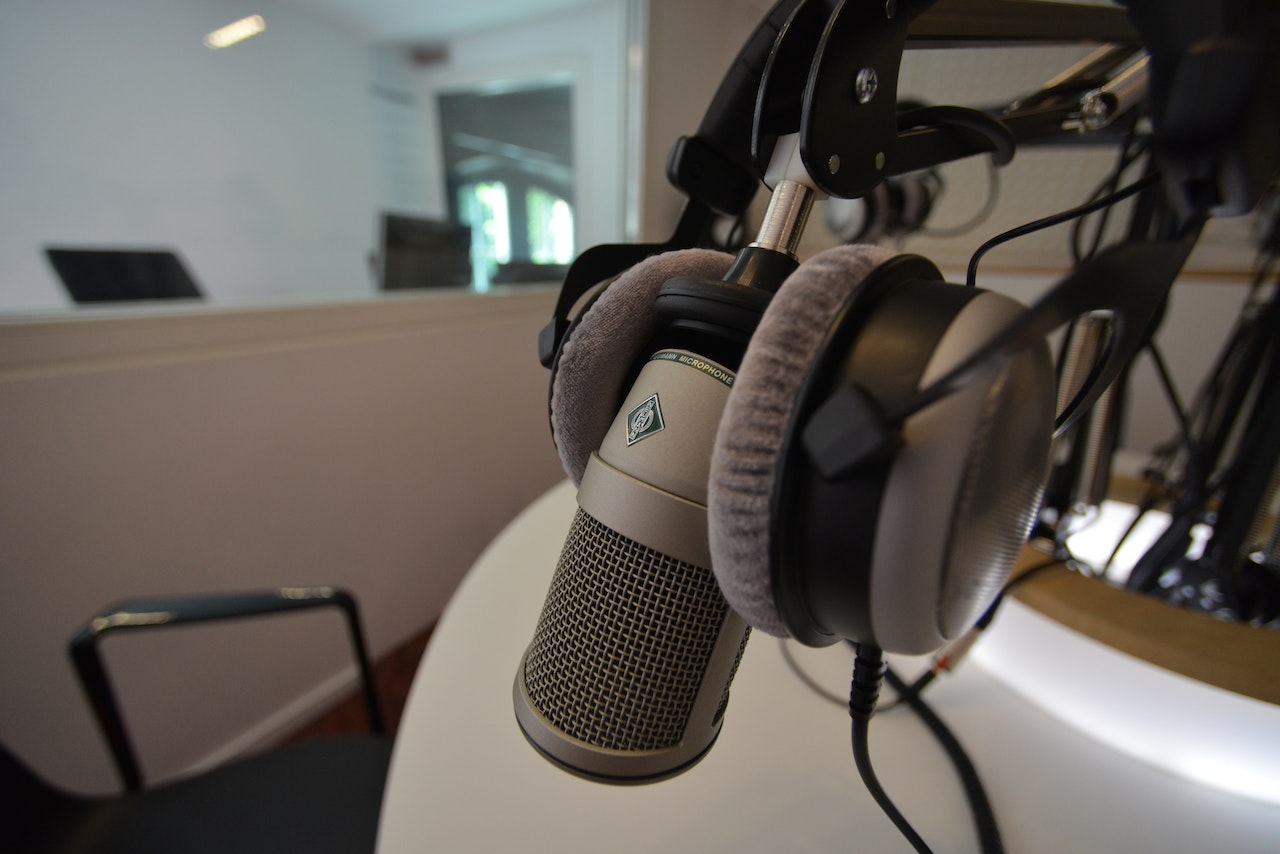In the world of podcast recording, the quest for the perfect sound often leads us down a path of technical complexities and intriguing equipment choices. Among the myriad of tools and technologies, the condenser microphone stands out as a staple for podcast recording, broadcasting, and live performances. However, nestled within the intricate workings of these microphones lies a concept that often puzzles both novices and seasoned audio enthusiasts alike: phantom power.
This article aims to demystify the enigma surrounding phantom power and its relationship with condenser microphones. We will explore not just the technicalities but also the practical implications of using condenser mics with or without phantom power.
Whether you’re setting up your first home studio, pondering over a microphone upgrade, or simply curious about the inner workings of audio equipment, this exploration will provide you with practical insights and a deeper understanding of what goes on behind the scenes in the world of professional audio.
As we delve into the specifics, remember that the journey through the world of audio technology is as much about the science as it is about the art. So, let’s embark on this journey, even if you’re a dynamic mic user with a curious mind and a keen ear, ready to unravel the mysteries of condenser microphones and phantom power.
Related: Best Microphones For Recording in Podcasting
Contents
What Is Phantom Power?
Phantom power, often a term shrouded in technical mystique, is actually a straightforward yet crucial concept in the realm of audio engineering. At its core, phantom power refers to a method of providing power to certain microphones and other audio equipment through the audio cable itself, typically a balanced XLR cable. This power is essential for the operation of active components within these devices, particularly in condenser microphones.
The term “phantom” is used because this power is invisibly transmitted through the same cable that carries the audio signal without interfering with it. Typically, phantom power provides a direct current (DC) voltage of 48 volts, although some equipment may operate on lower voltages like 12 or 24 volts. This voltage from the external power supply is necessary to charge the microphone’s capacitor, which plays a pivotal role in converting acoustic energy into an electrical signal.
Understanding the technicalities of phantom power requires delving into the workings of a condenser microphone. Inside these microphones, a capacitor, or a pair of closely placed plates, captures sound. One of these plates, the diaphragm, is extremely thin and vibrates in response to sound waves.
The other plate is stationary. The distance between these plates changes as the diaphragm vibrates, causing variations in capacitance and thus generating the audio signal. However, for this process to work efficiently, the capacitor needs a charge, which is provided by phantom power.
The consistent voltage supplied by phantom power ensures that the microphone’s internal preamplifier operates optimally, translating into a high-quality, low-noise audio signal. This is particularly important in studio and broadcast environments where clarity and detail are paramount.
The Role Of Phantom Power In Condenser Mics

Image by Freepik
Understanding the role of phantom power in condenser microphones is key to appreciating why this power source is more than just a technical necessity—it’s a fundamental component that significantly influences the performance and capabilities of these microphones.
Activation of the Capacitor
As mentioned earlier, the heart of a condenser microphone is its capacitor, which requires a consistent electrical charge to function. Phantom power provides this charge, enabling the capacitor to convert acoustic energy into an electrical audio signal with high fidelity. Without this power, the capacitor wouldn’t be able to maintain its charge, rendering the microphone ineffective in capturing sound.
Enhancing Sensitivity and Frequency Response
Condenser microphones are renowned for their sensitivity and wide frequency response. This is largely attributed to the lightweight diaphragm and the electrical charge provided by phantom power. The charged capacitor can detect subtle changes in sound pressure, allowing for the capture of a wide range of frequencies and nuances in the sound. This makes condenser mics particularly suitable for studio voice recordings and situations where capturing the finest details of sound is crucial.
Low-Noise Pre-Amplification
Another critical aspect of phantom power in condenser mics is its role in powering the microphone’s internal preamplifier. This preamp amplifies the microphone’s signal to a level that can be effectively used by mixing consoles or recording devices. The quality of phantom power directly affects the performance of this preamp, with a stable 48V supply ensuring low-noise operation and optimal signal integrity.
Implications for Durability and Design
The reliance on phantom power also influences the design and durability of condenser microphones. Since these microphones do not need to incorporate heavy internal power sources, they can be designed with a focus on sound quality and sensitivity rather than power management. This results in a range of designs, from large-diaphragm microphones for studio settings to compact, pencil-style mics for field recordings.
Phantom power is not just a technical requirement for condenser microphones; it’s a vital component that enhances their sensitivity, frequency response, and overall audio quality. It allows these microphones to capture sound with a level of detail and clarity that is unmatched, making them the preferred choice in settings where audio quality cannot be compromised.
Does A Condenser Mic That Doesn’t Require Phantom Power Exist?
The question of whether a condenser microphone can exist without the need for phantom power is one that intrigues many in the audio world. To address this, it’s essential to understand the fundamental design and operation of condenser microphones.
As we’ve explored, these microphones rely on a capacitor to convert sound into an electrical signal, and this capacitor requires an electrical charge to function effectively. This charge is traditionally supplied by phantom power.
However, the realm of audio technology is ever-evolving, and there have been attempts to design condenser microphones that can operate without standard 48V phantom power. These microphones typically use alternative power sources, such as batteries or plug-in power (a lower voltage power supply often provided by some recording devices). While these microphones do exist, they are exceptions rather than the norm and often come with their own set of limitations and considerations.
Battery-powered condenser microphones, for example, offer the convenience of not requiring an external power source but at the cost of having to manage battery life and potential changes in performance as the battery drains. Plug-in power microphones, on the other hand, are limited by the capabilities of the device providing the power, which may not always match the quality and consistency of standard phantom power.
In short, while condenser microphones that do not require traditional phantom power exist, they are relatively rare and often come with trade-offs. The majority of professional-grade condenser microphones still rely on phantom power to deliver their renowned audio quality and performance.
Related: Does the Samson Q2U need phantom power?
The Myth Of Phantom Power-Free Condenser Mics
The audio industry is rife with myths and misconceptions, and one such myth is the existence of phantom power-free condenser microphones that can match the performance of their phantom-powered counterparts.
Misconceptions And Myths
One common misconception is that all condenser microphones require a 48V phantom power source. While this is true for most professional-grade condenser mics, there are models designed to operate on lower voltages or alternative power sources. However, these models often face limitations in terms of sound quality, sensitivity, and noise performance.
Another myth is that phantom power is a mere convenience rather than a necessity. This belief undermines the critical role that a stable and consistent power source plays in the functioning of a condenser microphone. Phantom power is not just about providing energy; it’s about ensuring the microphone’s internal components operate at their optimal level.
The Reality Of Condenser Mics And Phantom Power
The reality is that the design and operation of condenser microphones are intrinsically linked to their power source. Phantom power provides a stable and interference-free supply of electricity that is crucial for the sensitive electronics within these microphones. It allows for the high fidelity and wide frequency response that condenser mics are known for.
While alternatives to phantom power exist, they often come with compromises. For instance, battery-powered condenser mics may offer portability but can suffer from varying performance as the battery level changes. Similarly, microphones that use plug-in power are dependent on the quality and consistency of the power supplied by the recording device, which may not be ideal in all scenarios.
FAQs
Will Phantom Power Hurt A Mic That Doesn’t Need It?
The concern about phantom power damaging a microphone that doesn’t require it is a valid one, especially considering the variety of microphones available. Generally, modern dynamic microphones and other types that do not require phantom power are designed to tolerate it without any damage.
This is because the balanced XLR connections typically used to transmit phantom power are designed in a way that prevents the power from affecting the microphone’s circuitry if it’s not needed.
However, caution is advised with certain types of ribbon microphones and older or specially designed microphones. Some vintage ribbon mics, for instance, can be damaged by phantom power due to their delicate ribbon elements and older wiring schemes.
Therefore, it’s always a good practice to confirm the compatibility of your condenser/dynamic microphone with phantom power and to turn off phantom power when connecting or disconnecting microphones that don’t require it to avoid any potential damage.
Why Do Condenser Mics Need 48V?
Condenser microphones require 48V of phantom power primarily for two reasons: to power their internal preamplifier and to charge the microphone’s capacitor. The capacitor, which is essential for converting acoustic energy into an electrical signal, needs a consistent electrical charge to function effectively. This charge is provided by the 48V phantom power.
The 48V standard was established as it provides sufficient voltage to power a wide range of condenser microphones while ensuring low noise and high-quality audio output. It’s a balance between providing enough power for the microphone’s needs and maintaining electrical safety standards.
Lower voltages might not be sufficient for some microphones, especially if you’re using condenser or dynamic mics, leading to reduced performance, while higher voltages could pose safety risks and require more robust insulation and circuitry.
Can A Condenser Mic Work With Less Than 48V Of Phantom Power?

Image by Freepik
While 48V is the standard for phantom power, some condenser microphones are designed to work with lower voltages. These microphones are often engineered to be more power-efficient or are intended for use with devices that cannot supply the full 48V.
However, operating a microphone with a lower than its required voltage can lead to reduced performance. This might manifest as lower sensitivity, reduced frequency response, or increased noise. It’s important to use the microphone with the audio interface along with its specified voltage for optimal performance.
Is There A Difference In Sound Quality Between Phantom-powered And Battery-powered Condenser Mics?
The difference in sound quality between phantom-powered and battery-powered condenser microphones can vary depending on the design and quality of the microphone. Phantom-powered mics generally provide a more consistent and reliable power source from the phantom power supply, which can translate into better sound quality, especially in terms of sensitivity and noise performance.
Battery-powered mics, while offering the convenience of portability, may suffer from variations in performance as the battery drains. Additionally, the internal circuitry required to regulate battery power can sometimes introduce noise or affect the audio signal. However, high-quality battery-powered condenser microphones are designed to minimize these issues, and in practical terms, the difference may not be significant for many applications.
Conclusion
In conclusion, the world of condenser microphones is deeply intertwined with the concept of phantom power. Understanding this relationship is crucial for anyone engaged in audio recording, whether in a professional studio or a home setup.
Phantom power remains a cornerstone in ensuring that condenser microphones perform at their best, capturing sound with the fidelity and clarity that make them the preferred choice in high-quality audio applications.

